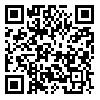Volume 14, Issue 5 (September & October 2023)
BCN 2023, 14(5): 631-646 |
Back to browse issues page
Download citation:
BibTeX | RIS | EndNote | Medlars | ProCite | Reference Manager | RefWorks
Send citation to:



BibTeX | RIS | EndNote | Medlars | ProCite | Reference Manager | RefWorks
Send citation to:
Ashraf R, Abdoli B, Khosrowabadi R, Farsi A, Pineda J A. The Effect of Modeling Methods on Mirror Neuron Activity and a Motor Skill Acquisition and Retention. BCN 2023; 14 (5) :631-646
URL: http://bcn.iums.ac.ir/article-1-2099-en.html
URL: http://bcn.iums.ac.ir/article-1-2099-en.html
The Effect of Modeling Methods on Mirror Neuron Activity and a Motor Skill Acquisition and Retention
1- Department of Behavioral and Cognitive Science in Sport, Faculty of Sport Science and Health, Shahid Beheshti University, Tehran, Iran.
2- Institute for Cognitive and Brain Sciences, Shahid Beheshti University, Tehran, Iran.
3- Department of Cognitive Science and Neuroscience, University of California, La Jolla, United States of America.
2- Institute for Cognitive and Brain Sciences, Shahid Beheshti University, Tehran, Iran.
3- Department of Cognitive Science and Neuroscience, University of California, La Jolla, United States of America.
Abstract:
Introduction: Mirror neurons have been suggested as a potential neural mechanism of observational learning. This study aims to investigate the effect of self-modeling, skilled model, and learning model on mu rhythm suppression and golf putting acquisition and retention.
Methods: The study was conducted on 45 male volunteer students (aged 19.4±0.37 years) in three experimental groups, self-modeling, skilled, and learning models with six sessions of physical and observational training in three periods of pre-test, acquisition, and retention. In the pre-test, after the initial familiarity with the skill, participants performed 10 golf putting actions while scores were recorded. Then, electrical brain waves in C3, C4, and Cz regions were recorded during the observation of 10 golf putting actions by their group-related models. The acquisition period consisted of golf putting training during six sessions, each consisting of six blocks of 10 trials. Before each training block, participants observed golf putting related to their group 10 times in the form of a video. Acquisition and delayed retention tests were also performed by recording scores of 10 golf putting actions, as well as recording electrical brain waves while observing the skill performed by the related model.
Results: Mixed analysis of variance (ANOVA) showed that the mu rhythm suppression in the pre-test was more in the self-modeling group compared to the skilled model and learning model groups, but this suppression was not significantly different in all three groups in the acquisition and retention tests. In putting task variables, all three groups that had no significant difference in the pre-test period made considerable progress in learning the desired skill from the pre-test to the acquisition test, and this progress was somewhat stable until the retention test. Also, both in the acquisition and retention periods, the self-modeling group showed better performance than the other two groups; however, no significant difference was observed between these groups.
Conclusion: These results suggest that the model-observer similarity is a crucial factor in modeling interventions and can affect the rate of mu rhythm suppression.
Methods: The study was conducted on 45 male volunteer students (aged 19.4±0.37 years) in three experimental groups, self-modeling, skilled, and learning models with six sessions of physical and observational training in three periods of pre-test, acquisition, and retention. In the pre-test, after the initial familiarity with the skill, participants performed 10 golf putting actions while scores were recorded. Then, electrical brain waves in C3, C4, and Cz regions were recorded during the observation of 10 golf putting actions by their group-related models. The acquisition period consisted of golf putting training during six sessions, each consisting of six blocks of 10 trials. Before each training block, participants observed golf putting related to their group 10 times in the form of a video. Acquisition and delayed retention tests were also performed by recording scores of 10 golf putting actions, as well as recording electrical brain waves while observing the skill performed by the related model.
Results: Mixed analysis of variance (ANOVA) showed that the mu rhythm suppression in the pre-test was more in the self-modeling group compared to the skilled model and learning model groups, but this suppression was not significantly different in all three groups in the acquisition and retention tests. In putting task variables, all three groups that had no significant difference in the pre-test period made considerable progress in learning the desired skill from the pre-test to the acquisition test, and this progress was somewhat stable until the retention test. Also, both in the acquisition and retention periods, the self-modeling group showed better performance than the other two groups; however, no significant difference was observed between these groups.
Conclusion: These results suggest that the model-observer similarity is a crucial factor in modeling interventions and can affect the rate of mu rhythm suppression.
Type of Study: Original |
Subject:
Cognitive Neuroscience
Received: 2021/02/12 | Accepted: 2023/07/27 | Published: 2023/09/1
Received: 2021/02/12 | Accepted: 2023/07/27 | Published: 2023/09/1
Send email to the article author
| Rights and permissions | |
 |
This work is licensed under a Creative Commons Attribution-NonCommercial 4.0 International License. |








